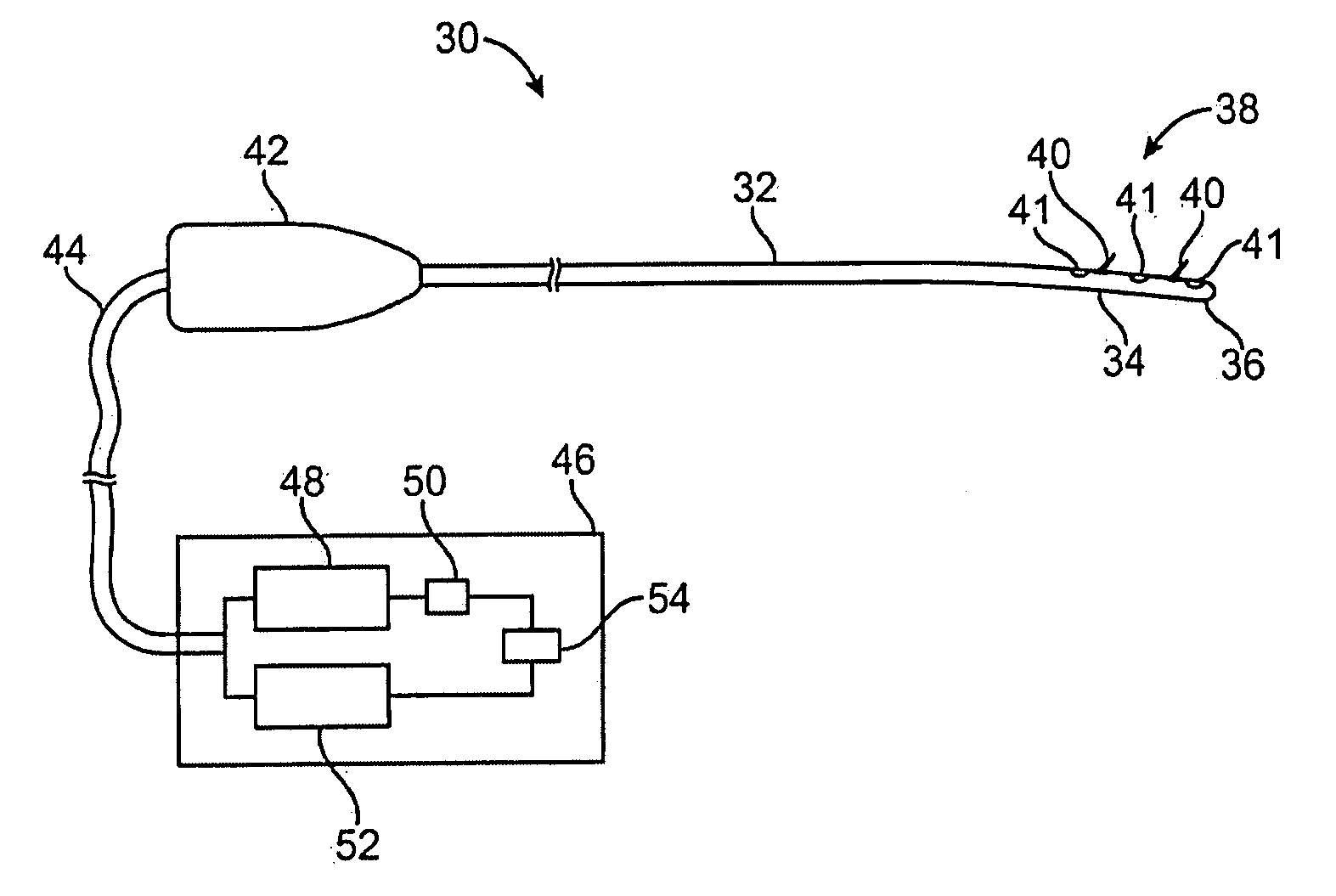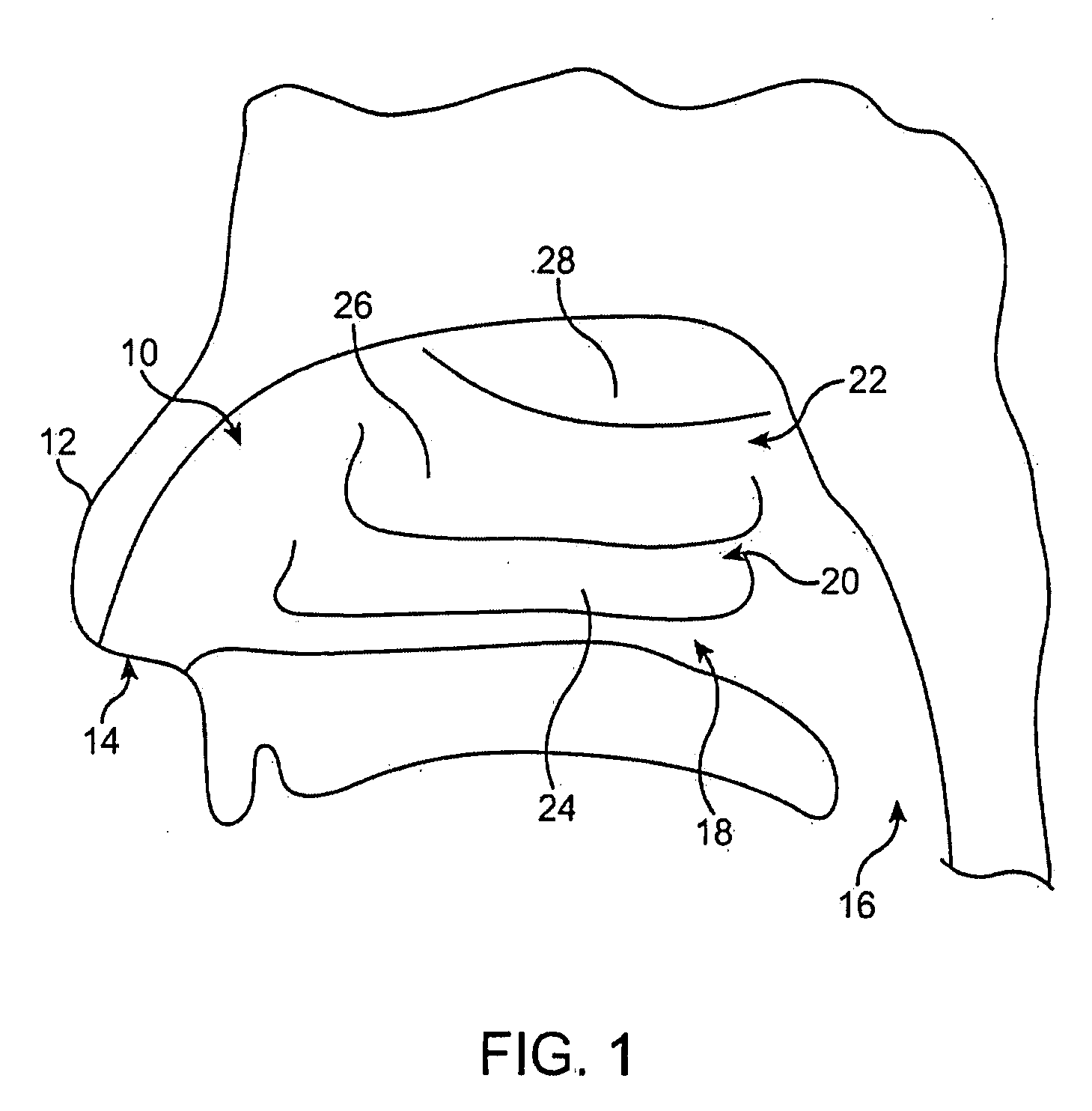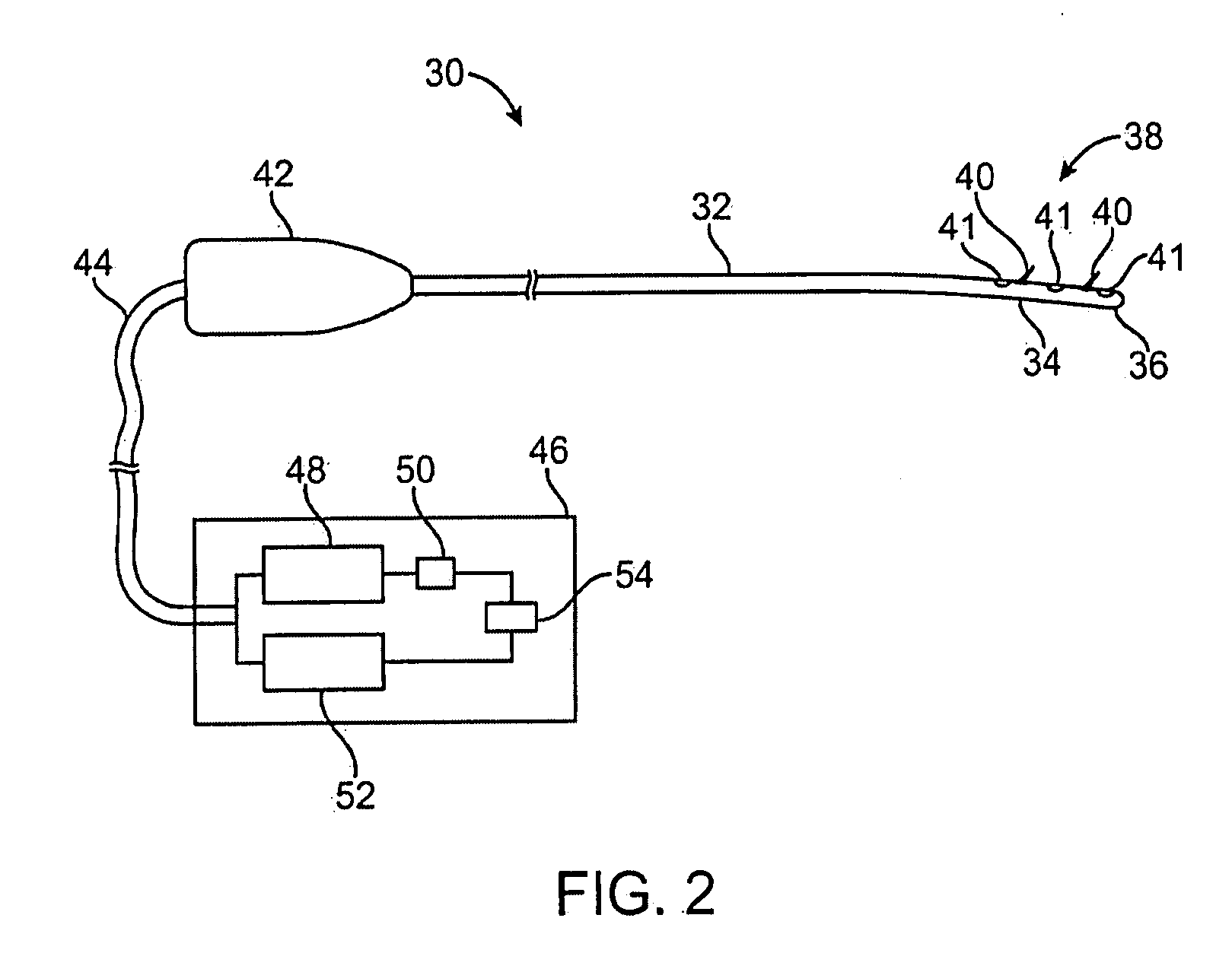Systems for treatment of nasal tissue
a nasal tissue and system technology, applied in the field of nasal tissue treatment systems, can solve the problems of obviating the need for surgical cutting, and achieve the effects of reducing the size of the nasal turbinate, reducing the size of the inferior nasal turbinate, and improving the air flow through the nasal meatus
- Summary
- Abstract
- Description
- Claims
- Application Information
AI Technical Summary
Benefits of technology
Problems solved by technology
Method used
Image
Examples
Embodiment Construction
[0047]As described above in FIG. 1, connecting the nostril 14 and pharynx 16 are the passageways of the inferior nasal meatus 18, the middle nasal meatus 20, and the superior nasal meatus 22. Forming at least a portion of each of these passageways are the nasal turbinates. Forming at least a portion of the inferior nasal meatus 18 is the inferior nasal turbinate 24. Forming at least a portion of the middle nasal meatus 20 is the inferior nasal turbinate 24 and the middle nasal turbinate 26. Forming at least a portion of the superior nasal meatus 22 is the middle nasal turbinate 26 and the superior nasal turbinate 28.
[0048]By reducing the size of a nasal turbinate, particularly the inferior nasal turbinate 24, obstruction of a nasal meatus such as the inferior nasal meatus 18 can be reduced. By reducing an obstruction of a nasal meatus, air flow through the nasal meatus is improved. One method for reducing the size of the inferior nasal turbinate 24 involves the application of ultras...
PUM
 Login to View More
Login to View More Abstract
Description
Claims
Application Information
 Login to View More
Login to View More - R&D
- Intellectual Property
- Life Sciences
- Materials
- Tech Scout
- Unparalleled Data Quality
- Higher Quality Content
- 60% Fewer Hallucinations
Browse by: Latest US Patents, China's latest patents, Technical Efficacy Thesaurus, Application Domain, Technology Topic, Popular Technical Reports.
© 2025 PatSnap. All rights reserved.Legal|Privacy policy|Modern Slavery Act Transparency Statement|Sitemap|About US| Contact US: help@patsnap.com



